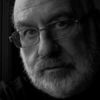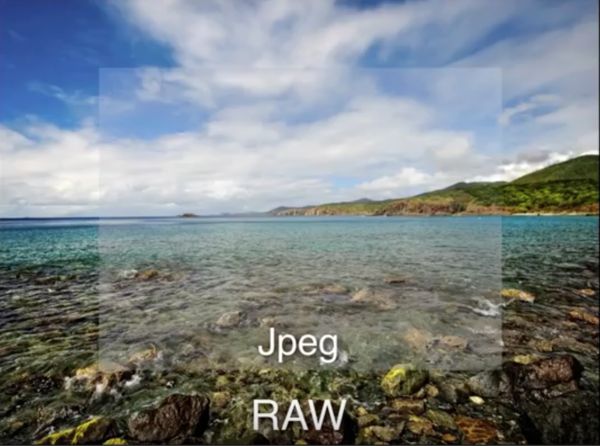Raw processing versus jpg
May 11, 2017 08:57:08 #
camerapapi wrote:
In the first place, and this is the rule "if ... (show quote)
Thanks for your comment, the Gurus make you feel bad if you don't do raw.
May 11, 2017 09:01:48 #
I believe there in an easy answer to this "issue". I always only shoot RAW as I do not want to waste space on my CF card with JPEGs. I also shoot JPEGs on the other card in camera, but I only use it if I am in a hurry. However, I set my Capture One software to open the images using settings that are similar to the JPEG settings on my camera. Therefor, when I open the RAW images in Capture One they look like the JPEGs. If I like them, I do not touch them. If I do not like some aspect of the image I make the corrections. I usually see data in the RAW images that the JPEG settings ignore, or override, and for those images I want to print I can work on them.
May 11, 2017 09:05:28 #
CPR wrote:
Like many aspects of photography shooting raw is only necessary in certain situations. Many people choose to shoot raw all the time JUST IN CASE one of these situations occurs. When conditions are perfect any camera, even an old Kodak Brownie, can get a good photo. It's when conditions are not perfect that better cameras and equipment are needed.
Personally I shoot raw if the photos are very important to me or the client or if I know I'll be doing heavy Photoshop work on the photos.
Personally I shoot raw if the photos are very important to me or the client or if I know I'll be doing heavy Photoshop work on the photos.
While I agree mostly, I almost always shoot Raw + Jpeg fine. If I'm shooting something for a friend or the church newsletter, I send out a jpeg and everybody is happy. But, if I'm going to use the image on the website or print it where it will be seen with my name attached, I will almost always do at least a little post processing. It is the only way to fully convey my personal perspective rather than the camera engineer's--as much as I really do appreciate Sony/Canon/Nikon engineers skill.
May 11, 2017 09:14:07 #
I like shooting RAW because there are times when I want to be able to fine tune my pictures and RAW allows you to do that better than JPEG because you can essentially do everything that you can do in a darkroom
May 11, 2017 09:36:50 #
You can do all the preprocessing you want before exposing a jpeg, but the jpeg image will be compressed (deleted unrecoverable data) your choice. I wish I could always take a perfect shot and than I will not need any post processing, but on second thought where is the fun in that.
May 11, 2017 09:43:35 #
If you're happy with the jpegs your camera gives you, then by all means shoot in jpeg and you'll be fine. Don't let anyone "guilt trip" you into using raw. But I will say this: I found that developing a raw image does give you a bit more detail and nuances of colour. And there are more options available on such things as white balance. But they do require processing, and that takes time. Frankly, I'd rather be behind the camera than in front of a computer!
I actually shoot both. That way, if the jpeg works, I have a quick and easy image that's ready to go immediately!
I actually shoot both. That way, if the jpeg works, I have a quick and easy image that's ready to go immediately!
May 11, 2017 10:08:31 #
The answer is "control" after you've taken the picture. You have so much more control with a RAW image versus jpg or even tiff, things like white balance, control of highlight/shadow detail, and so much more, and remember a RAW file never alters, changes are recorded in a separate file and until you export it to another file format, you can always go back where you started from. I agree most cameras do a fine job using the jpg setting and you can still do minor adjustments but RAW always wins if you are doing more extensive adjusting. Google "working with RAW files" and read and/or watch a few videos. Shoot in both jpg and RAW you never know when you might need to do a bit more than normal tweaking. Hope this helps a bit. The best methods are the ones you feel most comfortable with. Cheers, Helge
gbernier505 wrote:
I have a Samsung nx500 camera, which I have used with great results over the last year or so using jpg format. After reading so much about using the raw format, I decided to try it. After using jpg+raw and editing the results, I find that my raw edited pictures seem to be no better than my jpg pictures. Am I missing something here.
May 11, 2017 10:16:43 #
gnawbone
Loc: Southern Indiana
gbernier505 wrote:
I have a Samsung nx500 camera, which I have used with great results ......
I capture this picture today from a youtube video .... take it for what it is worth. If you go to the link below and start at 55 seconds (to about 1 minute 36 seconds) you'll see why RAW is important.
https://www.youtube.com/watch?v=NDtebpvATzc
May 11, 2017 10:24:07 #
Glad to read your comments. I have found the same, however, there are a few, very few pictures, that need raw to make it a picture of what you saw, low light, colors shaded, cloudy day of a beautiful bird. So I shoot both, usually, 99% of the time, edit the jpegs, and when happy, delete the raws. And yes, it is hours and hours of not much fun sitting in front of a computer. How much is your time worth? How much time do you have left? Is that how you want to spend it? Not I.
Mike
Mike
May 11, 2017 10:40:19 #
WessoJPEG wrote:
Tried every download, but computer won't handle it.
What version of Elements? you need to be at Elements 13 or above to use ACR version 9.0 which is required for the 7200. If you're using an older version of Elements and don't want to upgrade, you can always download Adobe's raw DBG converter.
May 11, 2017 10:46:47 #
Pictures are worth thousands of words. If your eyes aren't open you won't see it.
Gene51 wrote:
Maybe not. Jpeg is fast and easy until you have to... (show quote)
May 11, 2017 10:49:38 #
gbernier505 wrote:
I have a Samsung nx500 camera, which I have used with great results over the last year or so using jpg format. After reading so much about using the raw format, I decided to try it. After using jpg+raw and editing the results, I find that my raw edited pictures seem to be no better than my jpg pictures. Am I missing something here.
Hi .. In a few words the difference between JPEG and RAW is quality....Let me explain, If you only use JPEG then you are limited in the event you want to go back & recrop or enlarge, adjust exposure, as this will result in lowering your quality in that every time you edit it and "save", your image is compressed again and again resulting in less and less ( throwing away pixels ) pixels ( less detail ). Raw files contain all of the "Data" to make a new fresh or re-edited image before its converted into a JPEG. Here's how RAW works ( non technical ); its not a picture but DATA that is used to make a picture. Raw converters make a "simulated" picture ( bit map ) so that you can edit and see the edits, then when you are completed your adjustments it is then made into a JPEG ( or tiff) or an image for printing. Unlike JPEGS, in LR you can go back to this file and rework it without losing any quality (non destructive ). The quality between JPEG and a RAW JPEG may be subtle, and for the untrained eye, loss of quality may not be that evident, especially when printed small or used on the web. For professional photographers, ( gets paid ) it has to be of the highest quality, especially if they are to be enlarged and used for publication.
When you shoot in JPEG your camera is makeing editing adjustments, where RAW is not controlled by the camera's adjustments. Pros always shoot in RAW, ( except in occassions like capturing rapid motion like sports ). JPEG is ok if you are not seeking the ultimate in quality.
Hope I helped you.
May 11, 2017 10:50:50 #
Jim Bob wrote:
Geesus. I hope your thread won't deteriorate into the sort of BS usually generated on this topic. It's really simple: if you are satisfied with JPEGs, that's all that matters. However, it is useful to at least understand the potential advantages of RAW.



May 11, 2017 10:53:43 #
I just started shooting in raw, and can not believe the difference in my photos......My photos are SO much better, they even seem to be in better focus, how that can be is anybodys guess. But they are sharper, better color, bluer skys.....I could go on and on. I for one am now sold on RAW!! I usually don't even have to edit like I did in JPEG.
May 11, 2017 10:55:38 #
BlackRipleyDog wrote:
I'm sorry Jim, what does your response even mean? ... (show quote)
First learn to read WITH COMPREHENSION. Then post. Otherwise, you come off looking like an idiot.
If you want to reply, then register here. Registration is free and your account is created instantly, so you can post right away.












